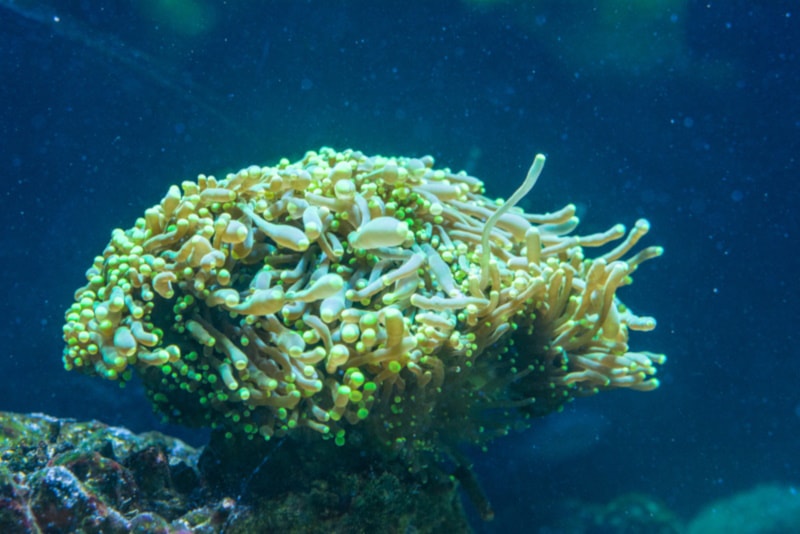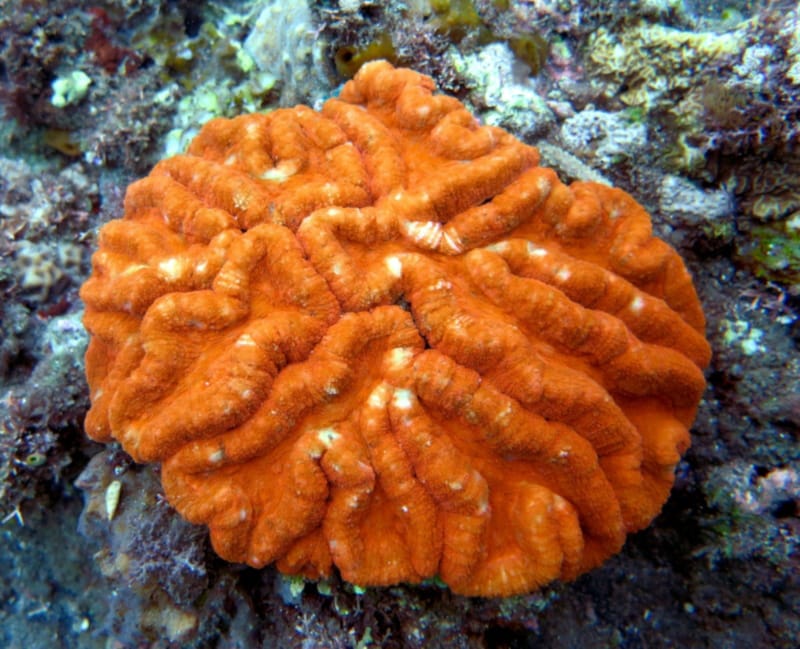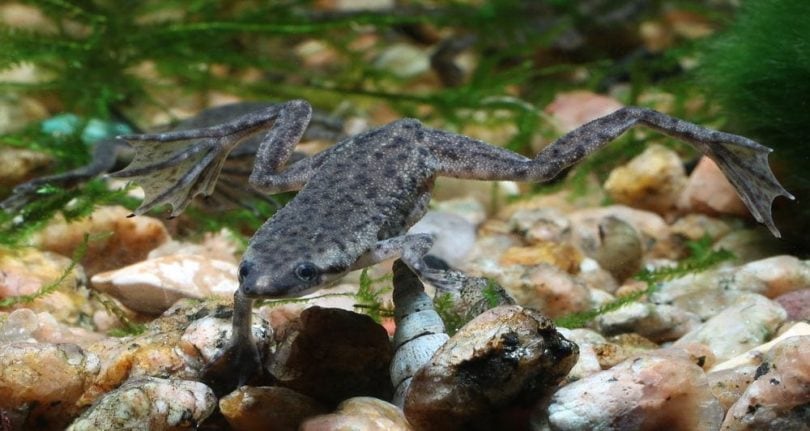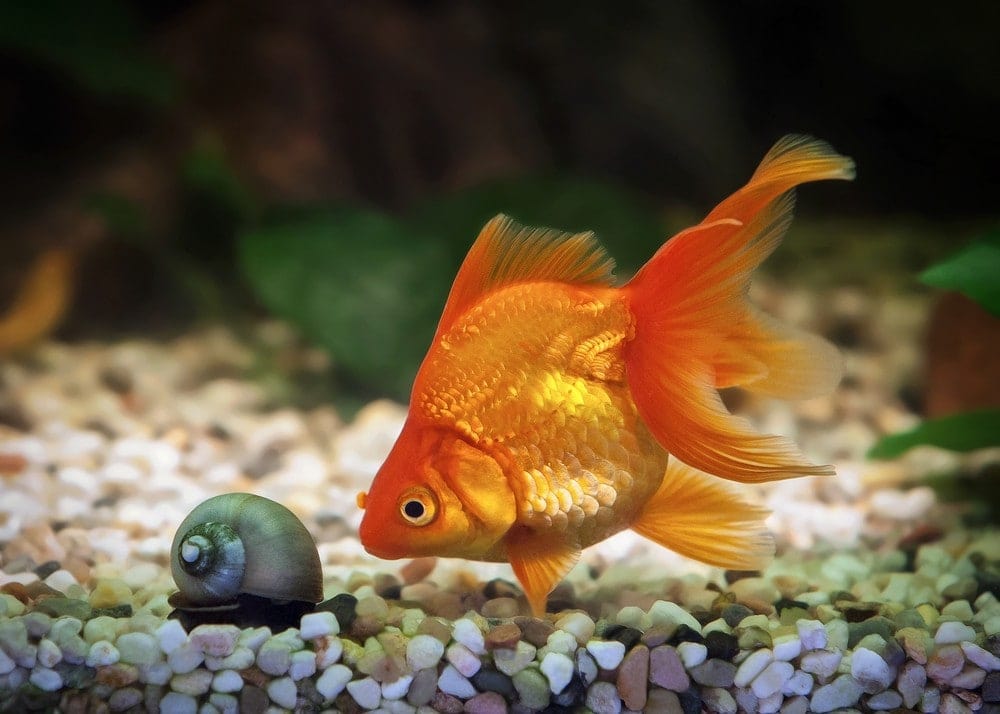LPS Coral Guide for Beginners: Types, Care & Tips
Updated on

Large polyp stony coral, or LPS coral, is a group of interesting corals that have a hard skeleton made of calcium carbonate and fleshy polyps. Although they have a slower growth rate, LPS corals are considered to be the better option for beginners than small polyp stony coral, or SPS coral. They are less sensitive to shifts in water parameters, and they also come in a variety of interesting shapes and colors.
LPS Coral Overview
| Family Name: | Multiple families make up LPS corals, including Euphyllia, Lobophyllia, and Acanthophyllia |
| Common Name: | Large polyp stony (LPS) coral; individual specimens have their own names |
| Origin: | Coral reefs across the world |
| Growth Rate: | Varies |
| Care Level: | Low to moderate |
| Lighting: | Low to moderate |
| Minimum Tank Size: | 10 gallons |
| Compatibility: | Varies |
LPS Coral Appearance
The appearance of LPS corals can vary significantly between species and specimens. There are dozens of species in the LPS coral grouping, so let’s talk about some of the most popular and beginner-friendly species.

- Brain Coral
As the name implies, brain coral is a grooved, rounded coral that has an appearance that is uncanny in its brain-like appearance. Although most people are familiar with flesh-colored brain corals, there are many species of brain corals. They come in a wide variety of colors, including purple, green, orange, pink, red, and white. They also come in many shapes and sizes, but all of them share a grooved appearance.
- Bubble Coral
These corals are covered in polyps that inflate with water during the daytime, giving them the appearance of bubbles. Some of them even have a grape-like appearance. Like brain corals, there is consistency in the appearance of bubble corals in that all of them have inflating, bubble-like polyps, but they come in many shapes and sizes. They tend to be more subdued in color, often ranging in color from tan and nude to gentle oranges and pinks, but some bubble coral species are very brightly colored in green, yellow, and orange.
- Candy Cane Coral
Candy cane corals have polyps that are plump and rounded. These corals are ideal beginner corals because of their hardy nature and lower aggression level than many other LPS corals. Some varieties of candy cane corals have red and white stripes, giving them their name. However, there are many types of candy cane corals, with one of the most popular varieties being the kryptonite candy cane coral, which has a glowing neon green coloration.
- Hammer Coral
Hammer corals come in a variety of shapes and sizes, with some growing in a branching formation and others growing in a wall formation. All hammer corals have polyps that have an appearance similar to that of the head of a hammer. Although they aren’t picky about lighting, brighter lighting will encourage more brilliant color development. These corals do extend sweeper tentacles and are considered to be one of the more aggressive LPS coral specimens.
- Torch Coral
Like its hammer coral cousin, the torch coral is an aggressive coral that will attack other corals that it can reach with its sweeper tentacles. These corals have long polyps that have a ball-shaped tip, giving them their torch name. They are not as popular as their hammer coral cousin, but their unique appearance and brilliant colors often make the torch coral extremely interesting to first-time coral keepers.
Where to Find It

Corals are generally not available in chain pet stores and other common places you might go to get a fish. Specialty fish and aquatics shops are going to be your most likely local source of LPS corals. Online vendors may be your only option if you don’t have any local shops, though. If you’re struggling to find LPS corals nearby, contact your local aquarists’ clubs for guidance.
General Care
The care needs of LPS corals can vary depending on the species, but they generally have many similarities. Although consistent water parameters are ideal for all aquatic creatures, LPS corals tend to be more tolerant of shifts in water parameters than SPS and soft corals.
That said, significant shifts in water parameters or poor water quality can damage or kill corals if not addressed. Color loss, tissue recession, white patches, tissue loss or death, and poor polyp extension are all signs that there is a problem with your coral.
The feeding needs of these corals can vary, so it’s important for you to familiarize yourself with the specific feeding needs of the coral species you select for your tank.
Habitat, Tank Conditions & Setup
Tank Size
One of the best things about corals is that they come in a huge variety of sizes, so there are corals that are appropriate for tanks of any size. In general, small reef tanks usually aren’t smaller than 10 gallons, but it’s important that you select coral species that won’t outgrow this small tank size.

Water Temperature & pH
Water temperature should be stable to support the health of your LPS coral. They tend to prefer water temperatures between 75–80°F since they are native to warm, tropical waters. Ideal pH levels are between 8.1 and 8.4, so they prefer slightly alkaline water. A dKH level between 8–12 will help stabilize the pH levels in your tank, ensuring that significant shifts don’t rapidly occur. To maintain the health of your LPS coral’s hard skeleton, calcium levels in the water should be kept between 400–450 ppm.
Placement
Different species of LPS corals have different needs as to where they are placed in the tank. For example, the walking dendro coral prefers to be placed in the bottom of the tank, but it can also move itself to more desirable locations. Torch corals can be placed anywhere in the tank, while bubble corals prefer the middle to bottom levels of the tank. Make sure to familiarize yourself with the preferred placement of any coral before adding it to your tank.
Lighting
The lighting needs of LPS corals vary between species, but the majority of them don’t require high lighting. Low to moderate lighting is enough for most species, with medium lighting typically bringing out the best coloration. Some of the lighting exceptions for corals that prefer high lighting include tongue coral, hedgehog coral, and chalice.
Flow Rate
Once again, the needs will vary between species. Low to medium water flow is the preferred range for LPS corals, though. High water flow may stress your coral and, in the case of corals that can’t move themselves, may lead to damage.
Concerns About LPS Coral

Just like with any type of coral, you should consider your tank livestock when selecting your LPS coral. Some corals will capture and feed on your tank livestock, while others prefer zooplankton and other microprey.
The good news is that, while most LPS corals can catch and consume fish in your tank, most of them won’t unless they’re desperate. In most cases, LPS corals that consume fish and other large prey do so because the fish is dead or injured, making them easy prey. However, small tank livestock, like shrimps, may get eaten.
Final Thoughts
If you’re in the market for corals to start your first reef tank, then the LPS coral group is a great starting point. These beginner-friendly corals are hardier than other options, and they come in so many varieties that you’ll never run out of interesting options. Their slow growth rate may be a turn-off for some people, but with proper care, many of these species can get quite large. With proper lighting and water parameters, you can expect beautiful colors and interesting behaviors from your LPS coral.
See Also:
Featured Image Credit: Sergieiev, Shutterstock













